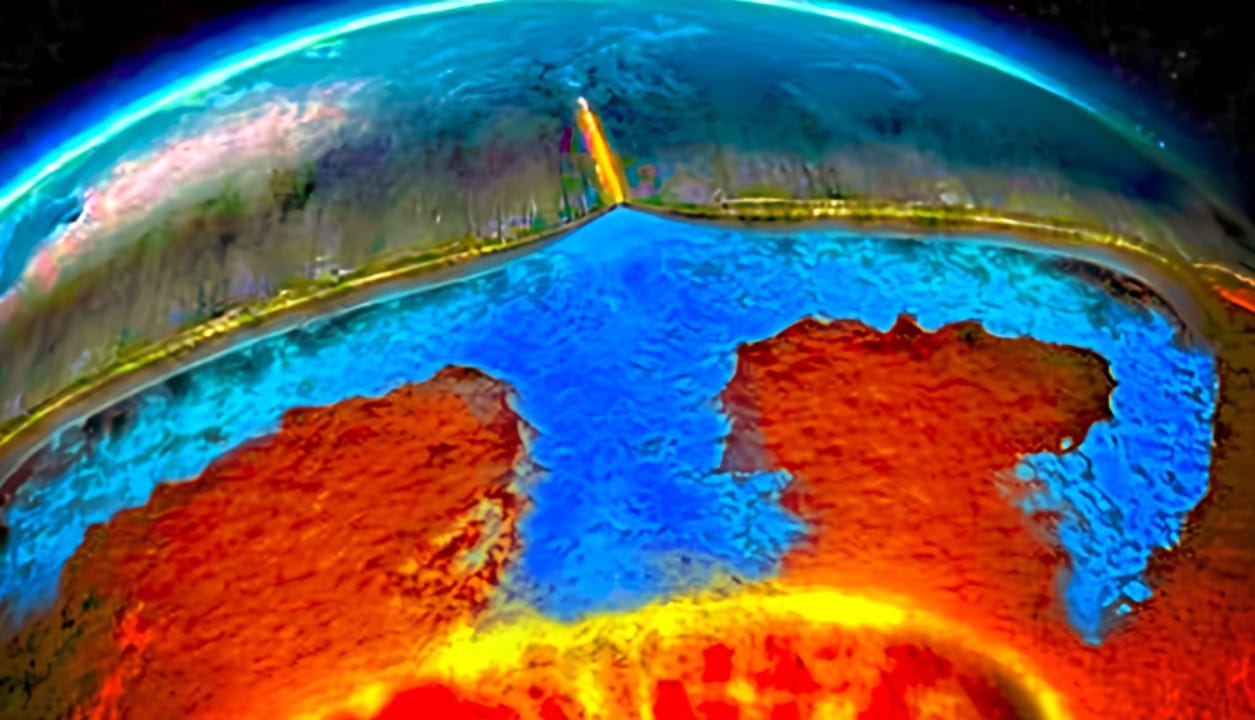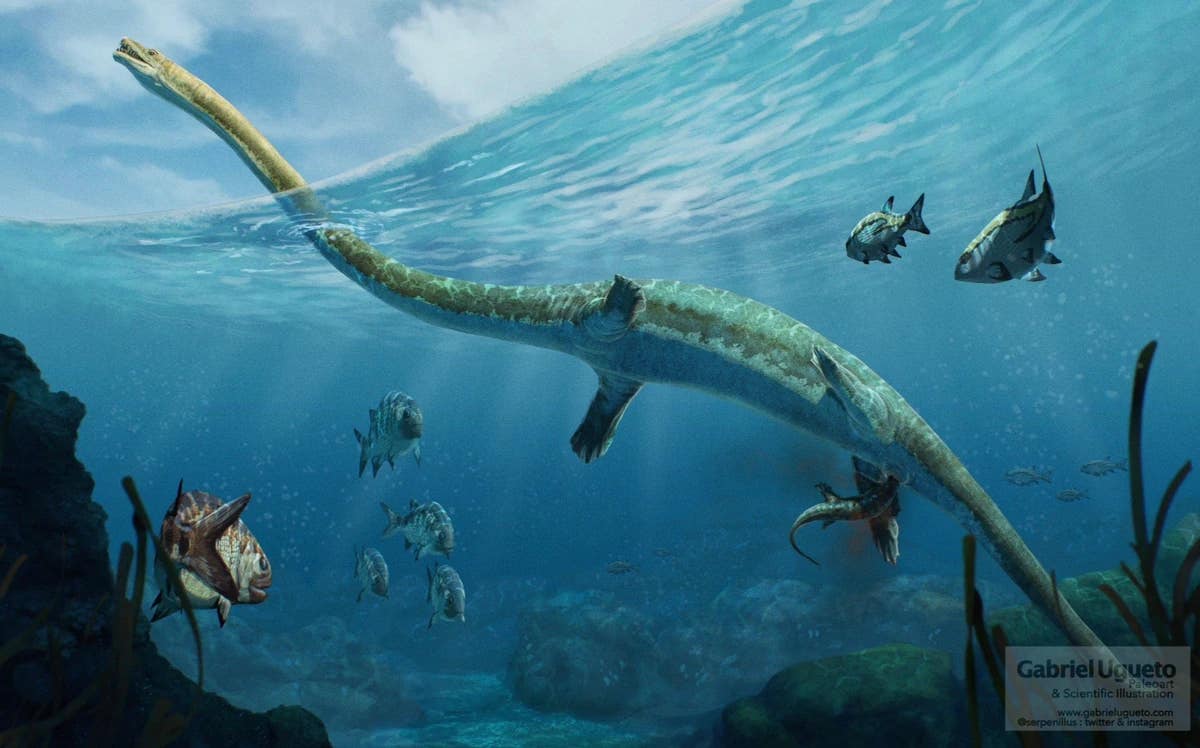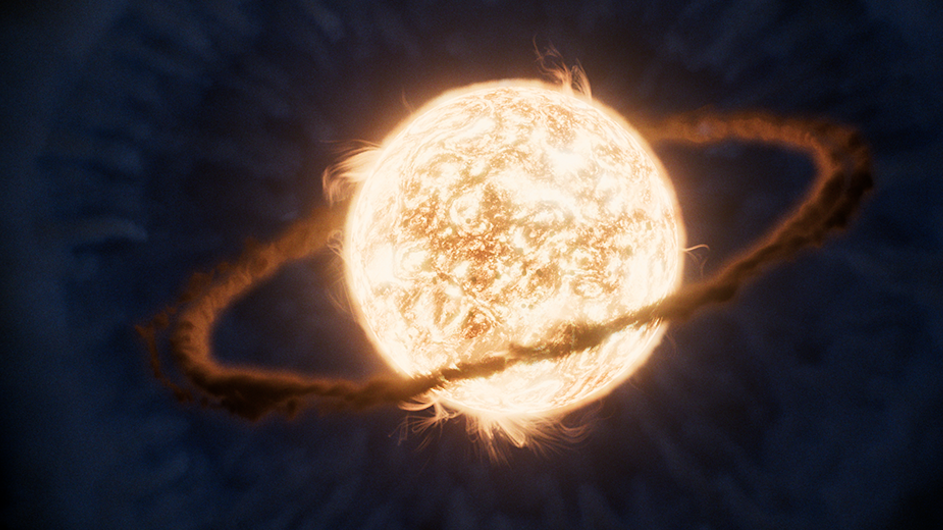Gigantic underground ocean contains 3x more water than all surface oceans combined
At an astonishing depth of approximately 400 miles beneath our planet’s surface, there is an abundant reservoir of water stored within rock.

Recently, groundbreaking scientific discoveries have been rolling out at a breathtaking pace, from astronomical research on what's inside a black hole, to the majestic 8th continent and the North American lake larger than the Great Lakes combined.
Each one of these findings seemed incomprehensible until now. Yet, perhaps the most awe-inspiring is this: deep beneath our feet, below the Earth's crust, lies a colossal ocean.
At an astonishing depth of approximately 400 miles beneath our planet's surface, there is an abundant reservoir of water stored within a rock type identified as 'ringwoodite'. This intriguing revelation is reshaping our understanding of the Earth's water cycle and its intricate geophysical processes.
Prior to this groundbreaking discovery, scientists were already aware that water could be stored inside mantle rock, but not as we know it. This water doesn't align with our conventional classifications of being a solid, liquid, or gas. Instead, it finds its existence in a mystifying fourth state – like that inside a sponge.
Related Stories
This ground-breaking research first saw the light of day in a scientific paper titled 'Dehydration melting at the top of the lower mantle.' Within this comprehensive study, the details of this below-the-surface aquatic phenomenon were meticulously mapped out.
Geophysicist Steve Jacobsen, a pivotal member of the research team, elucidated, "The ringwoodite is like a sponge, soaking up water. There's something very special about the crystal structure of ringwoodite that allows it to attract hydrogen and trap water." This statement offers an intimate glimpse into the unique, almost magnetic nature of this particular mineral.
Jacobsen, continuing his insights on the same, added, "This mineral can contain a vast amount of water under the conditions of the deep mantle." His observations lend credence to the idea that there might be a much more intricate and interconnected global water cycle than previously believed.
"I think we are finally witnessing evidence for a whole-Earth water cycle. This may very well shed light on the enormous amount of liquid water that graces the surface of our life-sustaining planet. For decades, the scientific community has been on the hunt for this elusive deep water," he elaborated.
How, one might ask, did scientists stumble upon this submerged treasure trove? The answer, intriguingly, lies in the relentless tremors and quakes our planet experiences. Researchers, delving deep into the Earth's seismic activities, realized that seismometers – devices designed to detect and record earthquakes – were capturing shockwaves originating from beneath the Earth's surface.
Through meticulous analysis of this data, the researchers concluded that these waves were interacting with the water held in the ringwoodite. To offer some perspective on the sheer volume of this subterranean water body: if the ringwoodite rock contained a mere 1% water, the Earth's crust would be sheltering a water volume thrice that of all the oceans combined on its surface.
While the vast expanse of our blue planet's oceans, rivers, and lakes have always captivated humanity, it is this concealed ocean, silently resting deep within the Earth's mantle, that is now compelling scientists and curious minds alike to reconsider our understanding of the Earth.
Such discoveries remind us of the boundless mysteries our planet holds and the exciting, uncharted waters (quite literally) of scientific exploration that lie ahead.
Indeed, in an era of staggering scientific discoveries, it is humbling realizations like these that make us marvel at the intricacies of the world we inhabit and the vast universe beyond.
Note: Materials provided above by The Brighter Side of News. Content may be edited for style and length.
Like these kind of feel good stories? Get the Brighter Side of News' newsletter.
Joseph Shavit
Head Science News Writer | Communicating Innovation & Discovery
Based in Los Angeles, Joseph Shavit is an accomplished science journalist, head science news writer and co-founder at The Brighter Side of News, where he translates cutting-edge discoveries into compelling stories for a broad audience. With a strong background spanning science, business, product management, media leadership, and entrepreneurship, Joseph brings a unique perspective to science communication. His expertise allows him to uncover the intersection of technological advancements and market potential, shedding light on how groundbreaking research evolves into transformative products and industries.



